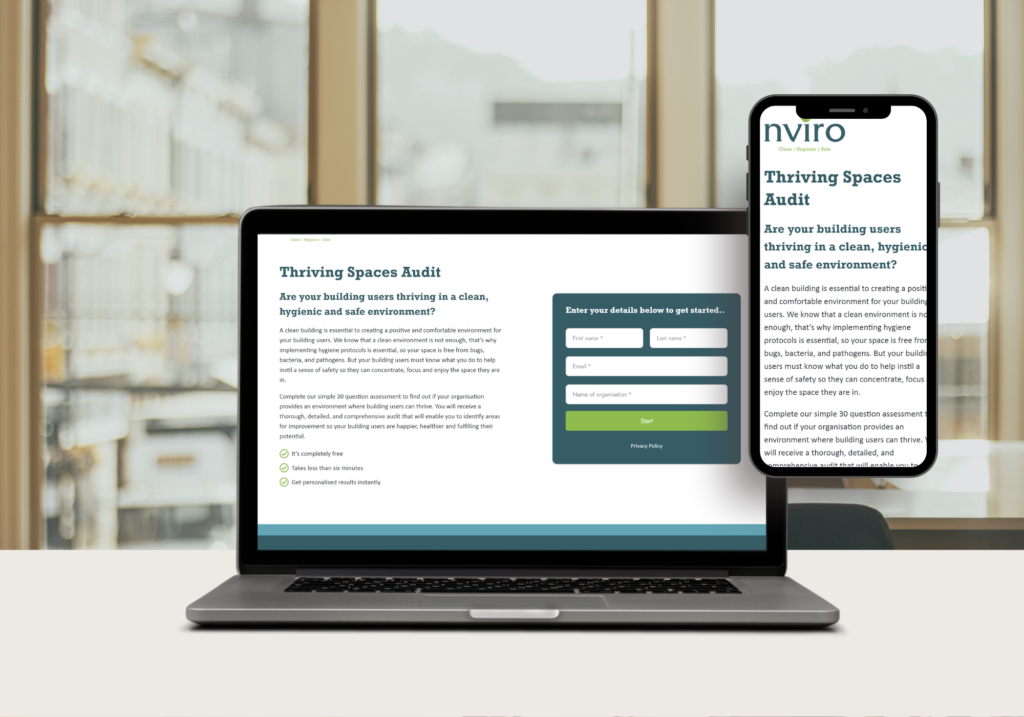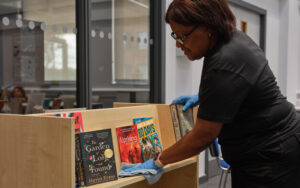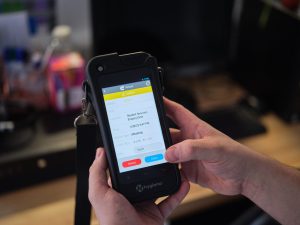What happens if pupils are worried their school is unclean?
01 June 2022 Category: Schools, Academies and Trusts
Nviro has always prided itself on going beyond just a cleaning service. We see ourselves as an organisation that focuses on keeping schools clean, hygienic and safe. Here we are going to discuss what safe means for schools, the importance we place on it and how best to deliver it.
What is safe?
A good illustration of what we mean by safe is in highlighting what we call The Wellbeing Hazard: it may seem enough to have a school environment that looks clean and has been proven to be hygienic, but there’s an important added step – communicating this to its users.
Schools are already a daunting place for a lot of young people, and anxiety is rising for the younger generation. New students may have heard some horror stories that circulate about secondary school toilets. For example, if a student gets her period or has a bathroom emergency in school, they need to feel that the toilet is a safe space to be. But if the bathrooms are mixed sex, or have gaps at the top and bottom of the doors where less kind pupils can tease them, students may start to develop anxieties around even using the toilets at school, which can lead to health issues both mentally and physically.
And that is what we mean by The Wellbeing Hazard. The hygiene of a restroom is irrelevant to someone who doesn’t know that it is hygienic. Even if it is tested for levels of bacteria, and the health risks have been taken out of the equation, a student can still have anxiety around the condition of the toilets, and this will negatively affect their standing in school. If we don’t communicate how safe our spaces are, we risk students’ wellbeing.
The risks of not communicating safety
Let’s look at Brian’s story. Brian is the Managing Director of Nviro, and he is open with us about how, when he was a child, he was always worried about using the restroom in his school.
Because of his anxiety, he would always rush home if he needed to use the loo, and this led to him eating and drinking less in school to accommodate the difficulty, which resulted in a dip in performance. He didn’t use the toilets at university, couldn’t go on aeroplanes and eventually had a nervous breakdown.
This may seem like an extreme example, and it’s worth noting that the condition of the toilets in his childhood school were far from today’s standards, but since Brian has begun relaying his story to others, we’ve found more and more people tell us of similar anxieties they had growing up and we’re hearing that their children are also feeling the same concerns.
Modern schools are being built to new and different standards to older schools. In some modern schools, there isn’t a door on the front of the toilet area – it’s an open access space with closed off cubicles within that area. Some schools are going the opposite way: rather than no door, they’re locking the outer doors to prevent mischievous students trashing the loos during breaktime, and requiring students to ask for the key.
In either direction, there is a distinction between the way schools are utilising toilets and other public spaces around teenagers. How these young people feel about toilets is going to be emblematic of how they interact with their school at large.
If the toilets are safe to use, but the students do not feel safe to use them, how are you going to make your students comfortable within school?
Prolonged exposure to stress can impair memory, attention and cognitive function. Conveying that a school is safe may not seem like the first thing to add to your agenda, but not providing reassurance is a quick way to give students a reason to want to skip days or neglect their education.
Typical pitfalls we see in schools
This isn’t going away. A study in the US shows that anxiety had already been increasing in young adults long before 2020, and increased awareness of pathogens – including ones like flu and norovirus, as well as Covid – has been on everyone’s mind since the pandemic.
The biggest pitfall we see is not taking the time to communicate to users of a space that the toilets are actually clean. You need to be using all the tools at your disposal to illustrate this.
For instance, applying protective coatings that kill microorganisms on a surface over a 60-90 day period does wonders for heightening the hygiene rating of a school, but if students don’t know that you have these coatings, or what they do, then it’s not going to make them feel any safer.
An absence of clear signage to illustrate that your area is safe is a common problem that is so easily fixed. Publicly displaying what was cleaned, and when, can provide that extra boost that students may need.
Remember that the signage is useless unless it is backed up by vigilant hygiene measures as well as a clean appearance. You wouldn’t feel great eating in a restaurant that looks like a mess, regardless of its hygiene rating. The same can be said for schools.
How can you tackle safe more effectively
Alongside clear and consistent signage, there are other tokens that can demonstrate that your school is safe alongside clean and hygienic.
If you communicate your hygiene policies and processes clearly to all building users, it means they will have a thorough understanding of how safe the school actually is. Regular hygiene reports are a way for students and staff to report when certain parts of the school need extra attention, and these can go a long way.
We recommend acknowledging the importance of the visibility of cleaners. During the pandemic, we found that making spaces hygienic was not enough: people needed to actually see the cleaning being done. This is still true. If your building users can visibly see cleaners going into spaces, and can easily identify them as cleaners by their badges and uniforms, it will help allay safety concerns.
A further recommendation is to have absolute clarity on any health and safety measures taken out by the cleaners, and for cleaning teams to maintain the highest possible standard of behaviour while cleaning. The answer to new and increased safety concerns doesn’t need to be complex. When mitigating the anxiety of students and staff in a school, the biggest impact can be as simple as communication, visibility and professionalism.
Fortunately, these are all areas where Nviro excels. If you want to hear more about how we can make your school clean, hygienic and safe, reach out to us today.
As a specialist cleaner in educational settings, Nviro provides clean, hygienic and safe environments in universities, colleges and schools. Read our blog about ‘What happens when ‘hygienic’ is not as clean as you think?’.
Is your building Clean, Hygienic and Safe?
We have developed the Thriving Spaces Audit to help you identify whether your building is clean, hygienic and safe. This audit is a thorough and detailed analysis that will enable you to identify areas for improvement so your building users are happier, healthier and fulfilling their potential. It allows you to tailor your cleaning services to meet your needs, ensuring a clean, hygienic and safe environment for all to thrive in.



